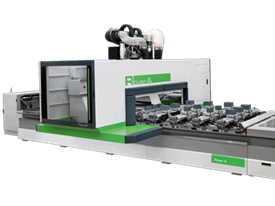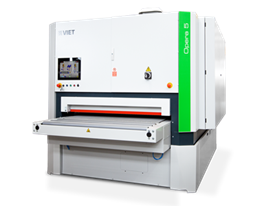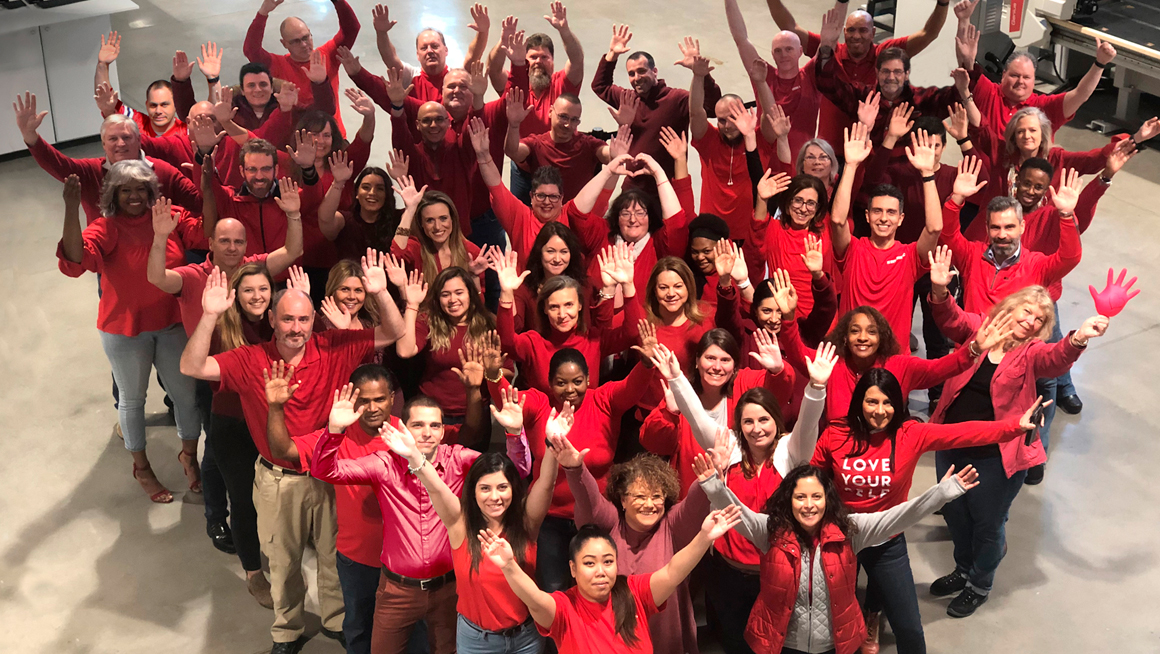For Tammy Wright, February is much, much more than a month when the nation whole-heartedly celebrates heart-healthy lifestyles and works to eradicate heart disease and stroke. American Heart Month has been an integral part of the fabric of Wright’s life for more than four decades.
When Wright, who is Parts and Tooling Team Leader for Biesse, Intermac and Diamut, was born in 1978, she was considered a “blue baby.” Doctors quickly discovered she had a congenital heart defect called truncus arteriosus, a rare type of heart disease in which a single blood vessel comes out of the right and left ventricles, instead of the normal two vessels (pulmonary artery and aorta). She also had a VSD (ventricular septal defect), a hole in the lower chamber of her heart.
At age 1, Wright became the youngest person ever in Washington, D.C. to have open heart surgery to create an artificial artery in the pulmonary position and patch her ventricles. The artery needed to be replaced as she grew so she had two more open heart surgeries at Children’s National Medical Center in Washington. As the poster child for the Montgomery County Chapter of the American Heart Association, her story was featured at a black-tie dinner when she was in 6th grade. When she was 13, she got to stand in the Oval Office when George W.H. Bush signed Proclamation 6247 to designate American Heart Month. She even corresponded with Nancy Reagan, a major supporter and frequent visitor to Children’s National Medical Center.
“Although my mom was a single parent juggling three children, I was able to do all kinds of things. Girl Scouts. Gymnastics. Competitive horseback riding,” Wright said. “I was even a swimmer until I reached an age that required longer swim lengths to compete and my cardiologist said I had to stop because it would mean too much aerobic activity. I quickly asked if I could join the diving team instead, eventually making my high school team.”
After Wright married, doctors told her not to have kids. She had three. When she was pregnant with her son, she went into heart failure and had a 4th open heart surgery at Inova Fairfax in Virginia shortly after his birth. A 5th surgery came later in June 2013 at Carolinas Healthcare, now Atrium Health in Charlotte.
“When I was a child, I was bullied -- support groups and organizations helped lessened the shame I felt,” Wright said. “The American Heart Association’s work with their local hospitals helped a lot by forging partnerships with other national organizations like Mended Little Hearts and the Adult Congenital Heart Association. One in 100 babies is born with congenital heart disease. Of those babies only 1% have truncus, so that tells you how rare it is. In the past, there wasn’t much reason to educate children about the disease because they weren’t expected to live past age 10.”
But that changed as Wright grew up. In 2011, when she went for a cardiac catheterization, she was encouraged to learn all about her condition, how to care for herself and advocate for herself. “I had always been told that I was the oldest person living with truncus. But when I was 33, I went to a conference in Los Angeles and found out that wasn’t true. I called my mom so excited that I had met two people older than me. It was phenomenal.”
Today Wright has lower chamber heart failure, but she says it’s different in congenital patients than in acquired disease. “It does not have the same prognosis -- you just live with it for who knows how many years.” She is glad when February rolls around and is particularly happy about the “Go Red for Women” campaign. “We need to realize that heart disease presents itself differently in women—the typical symptoms you read about don’t necessarily apply to us. Like me, everyone needs to know as much as possible to take care of ourselves.”
1 in 3 women die of heart disease and stroke each year, so it is clearly not just a man’s disease. More at goredforwomen.org.



.png)






 Worldwide
Worldwide
 Italia
Italia
 United Kingdom
United Kingdom
 Россия
Россия
 France
France
 中国
中国
 Asia
Asia
 Deutschland
Deutschland
 España
España
 Schweiz
Schweiz
 North America
North America
 India
India
 Australia & New Zealand
Australia & New Zealand
 Türkiye Cumhuriyeti
Türkiye Cumhuriyeti
 Middle East
Middle East
 Brasil
Brasil

